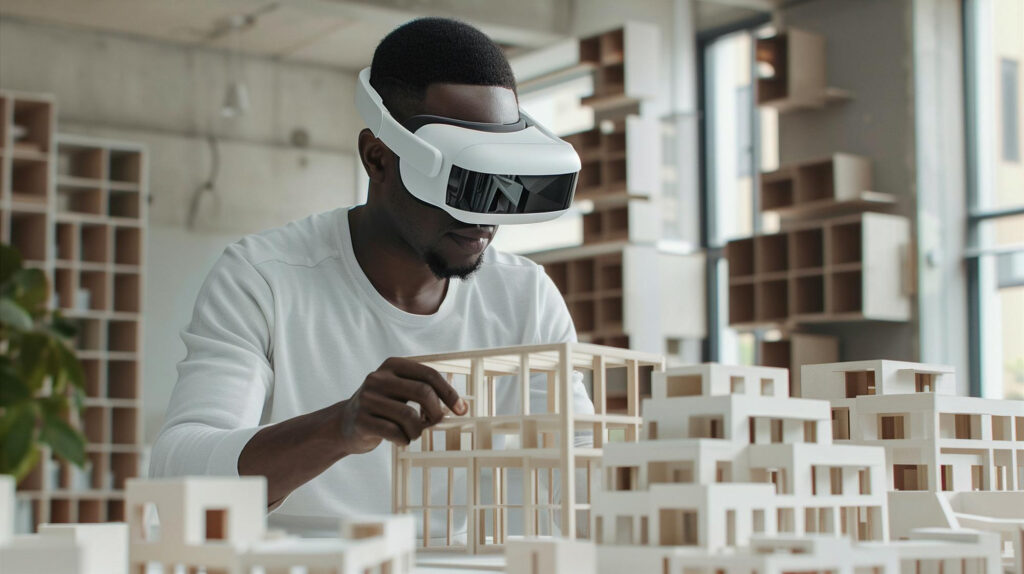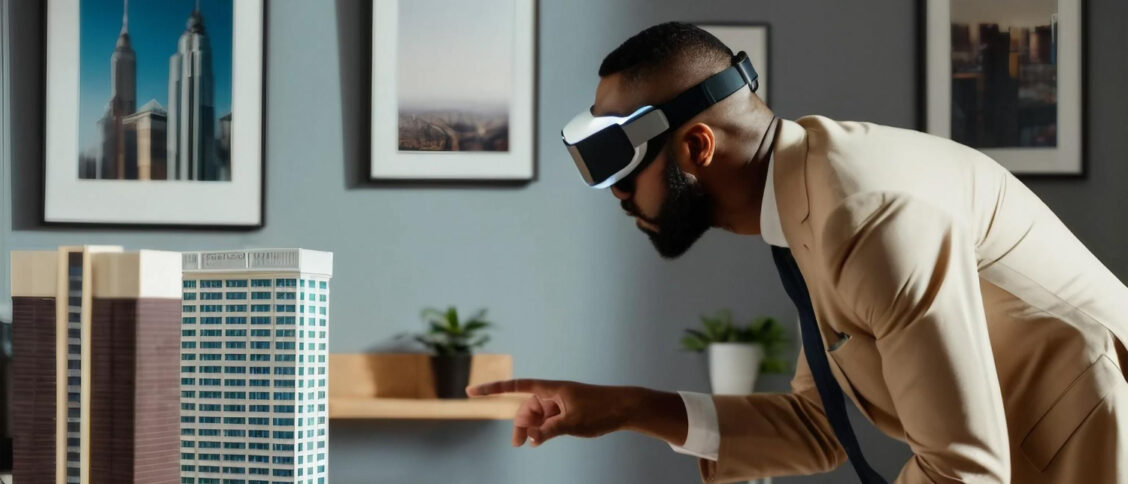A New Era in Architectural Design
Imagine walking through a building that hasn’t even been built yet. Opening doors, exploring rooms, seeing how sunlight falls through the windows—all before a single brick is laid. This is no longer just an architect’s dream. Thanks to Virtual Reality (VR), it’s the new standard in architectural visualization.
The architecture and design industries are evolving fast, and VR is at the center of this transformation. From improving client communication to reducing costly design errors, Virtual Reality is reshaping how buildings are designed, reviewed, and experienced.
What Is Virtual Reality in Architecture?

Virtual Reality in architecture refers to the use of immersive, computer-generated environments that allow clients, designers, and stakeholders to explore and interact with 3D models of buildings and spaces. Instead of looking at static blueprints or 3D renders, users can step into a virtual version of the space using a VR headset.
This immersive experience gives a realistic sense of scale, proportion, and atmosphere, something that traditional visuals just can’t match.
Why Architects Are Embracing VR
- Better Client Communication
Clients often struggle to understand 2D plans or even high-quality 3D renders. VR bridges that gap by showing them exactly what space will look and feel like. They can walk through the design, ask questions in real time, and make more confident decisions, leading to smoother projects and fewer revisions.
- Fewer Costly Mistakes
Design flaws can be caught early when experienced in a realistic setting. Whether it’s an awkward hallway, poor lighting in a living room, or a blocked sightline, VR allows teams to spot and fix issues before construction begins.
- Faster Design Approvals
With VR, clients and stakeholders don’t need to guess how a space will look; they can see and feel it. This often speeds up the approval process because decision-makers have a much clearer picture of the outcome.
- Improved Collaboration
Design teams, developers, and engineers can virtually meet inside a project to discuss changes and align decisions in real time, no matter where they are in the world.
- A Competitive Edge

Firms using VR instantly stand out. Offering an immersive, futuristic experience shows innovation, professionalism, and attention to detail, qualities that win clients and projects.
Real-Life Applications of VR in Architecture
- Residential projects: Allowing homeowners to experience different layouts, finishes, and furniture options before construction starts.
- Commercial buildings: Helping investors and business owners visualize office layouts, foot traffic flow, and customer experience.
- Urban planning: Offering city officials and communities a walk-through of future public spaces, streetscapes, and infrastructure.
Is VR the Future of Architecture?
It’s more than just a trend; Virtual Reality is becoming a must-have tool in modern architecture. As technology becomes more accessible and affordable, we can expect to see it integrated into every phase of the architectural workflow, from early concept development to final client presentations.
Firms that embrace this innovation now will lead the way in delivering smarter, faster, and more impressive results.
Final Thoughts
Virtual Reality is no longer science fiction; it’s a practical, powerful tool that’s changing how architects bring their visions to life. It empowers both designers and clients, improves efficiency, and unlocks creative possibilities we couldn’t have imagined just a few years ago.
If you’re in the architecture, real estate, or design industry and haven’t explored VR yet, now is the time to dive in.
Ready to Step into the Future of Design?
🔹 Transform Your Next Project with Immersive Visualization
🔹 Let’s Make Your Vision a Reality, Contact Us Today

